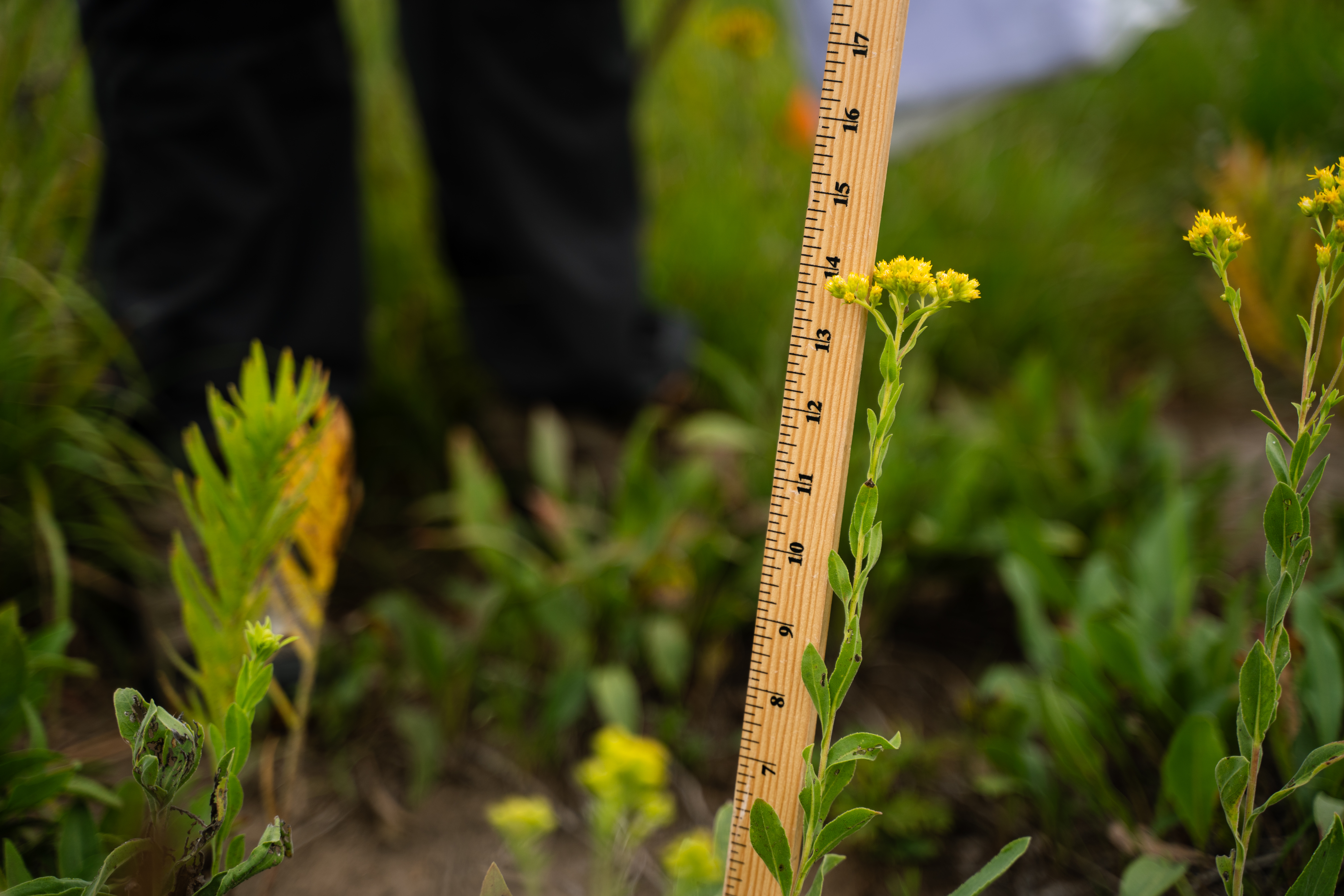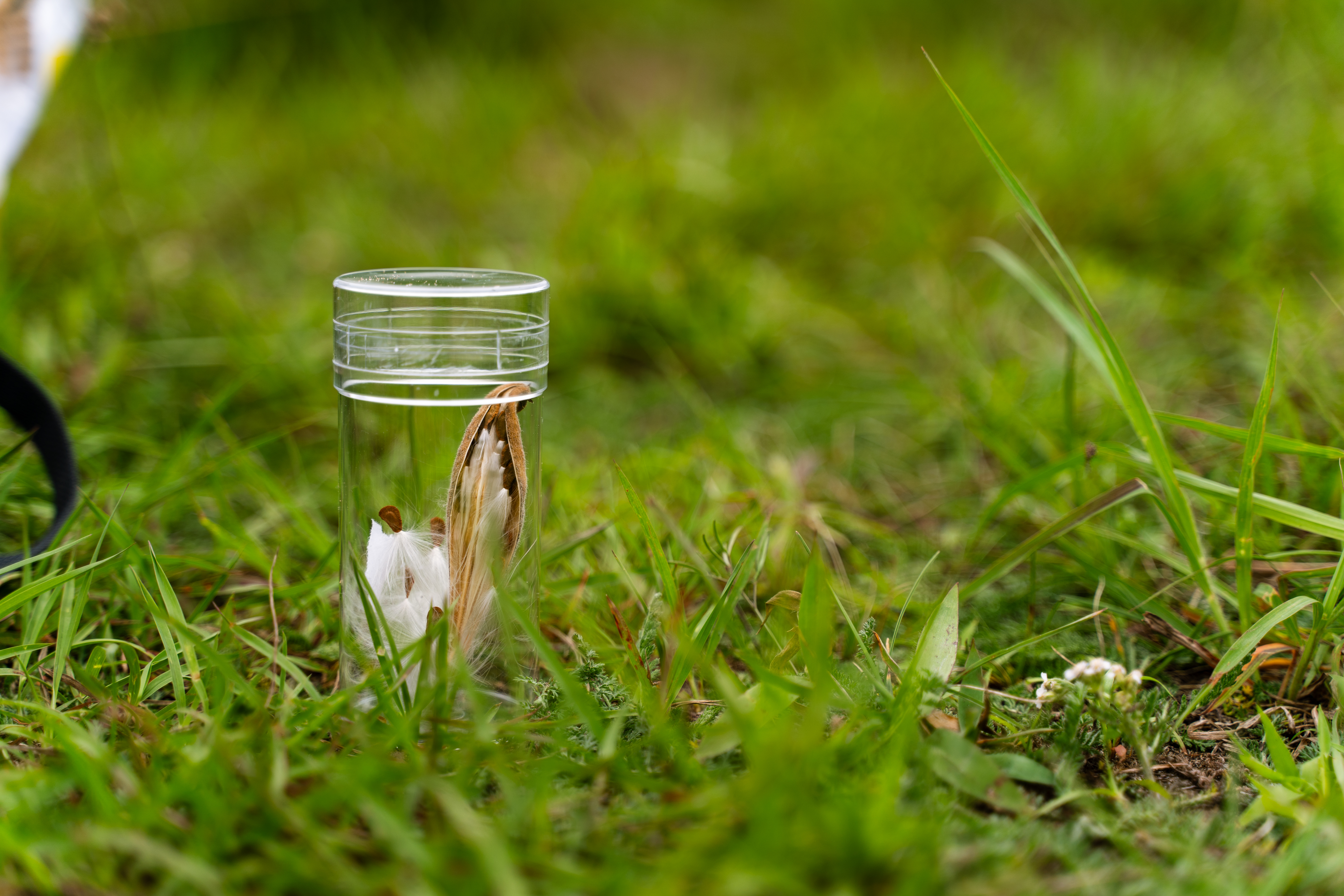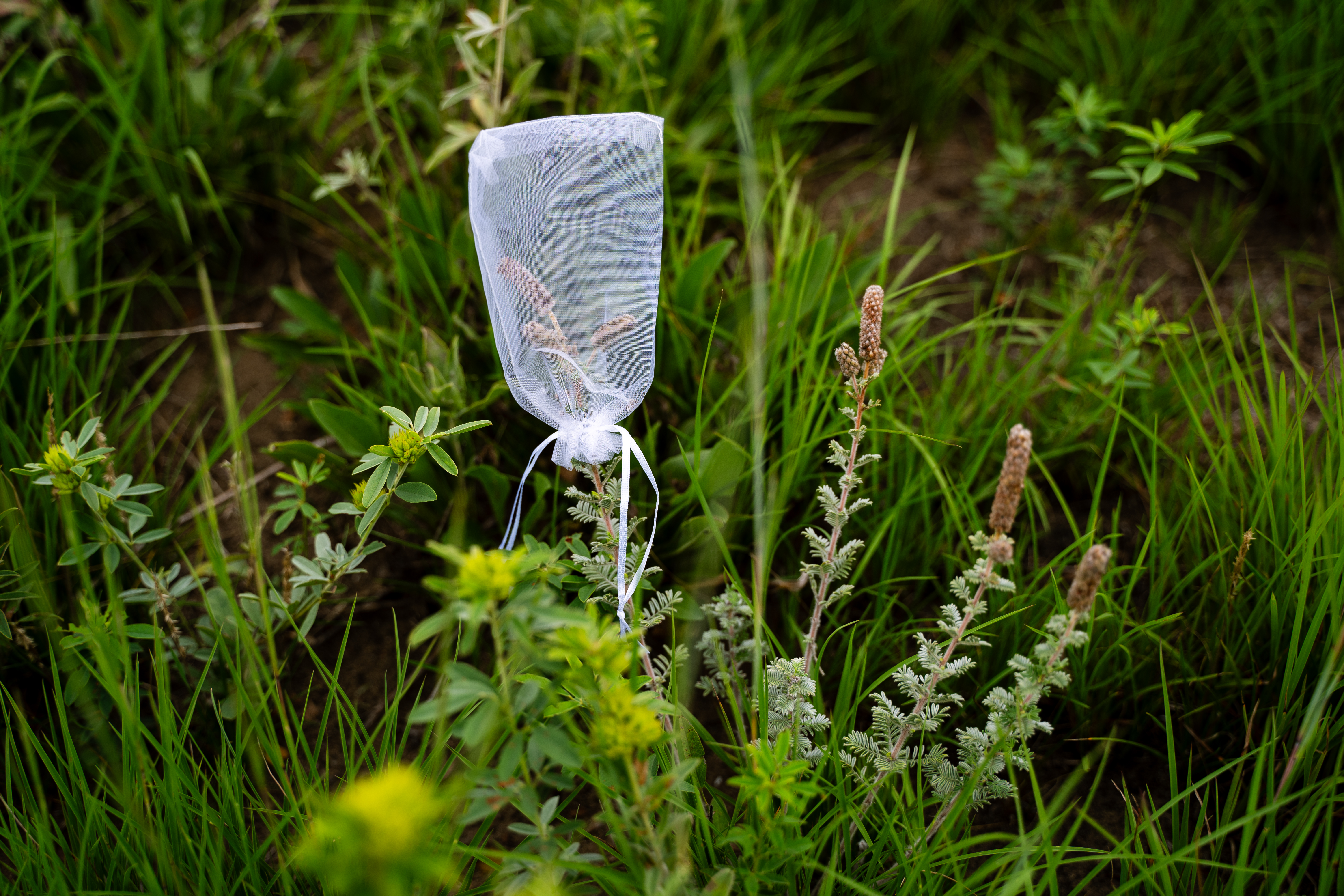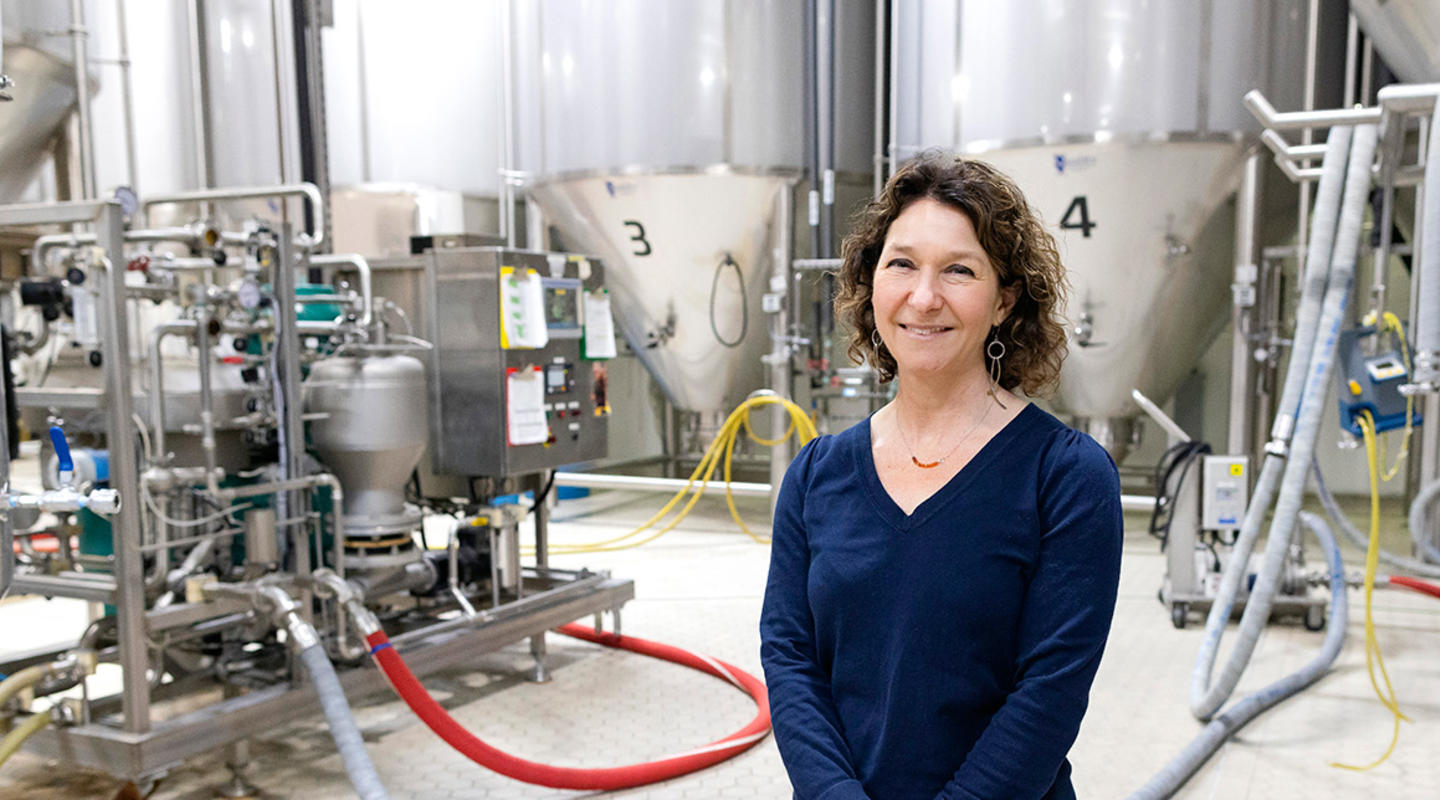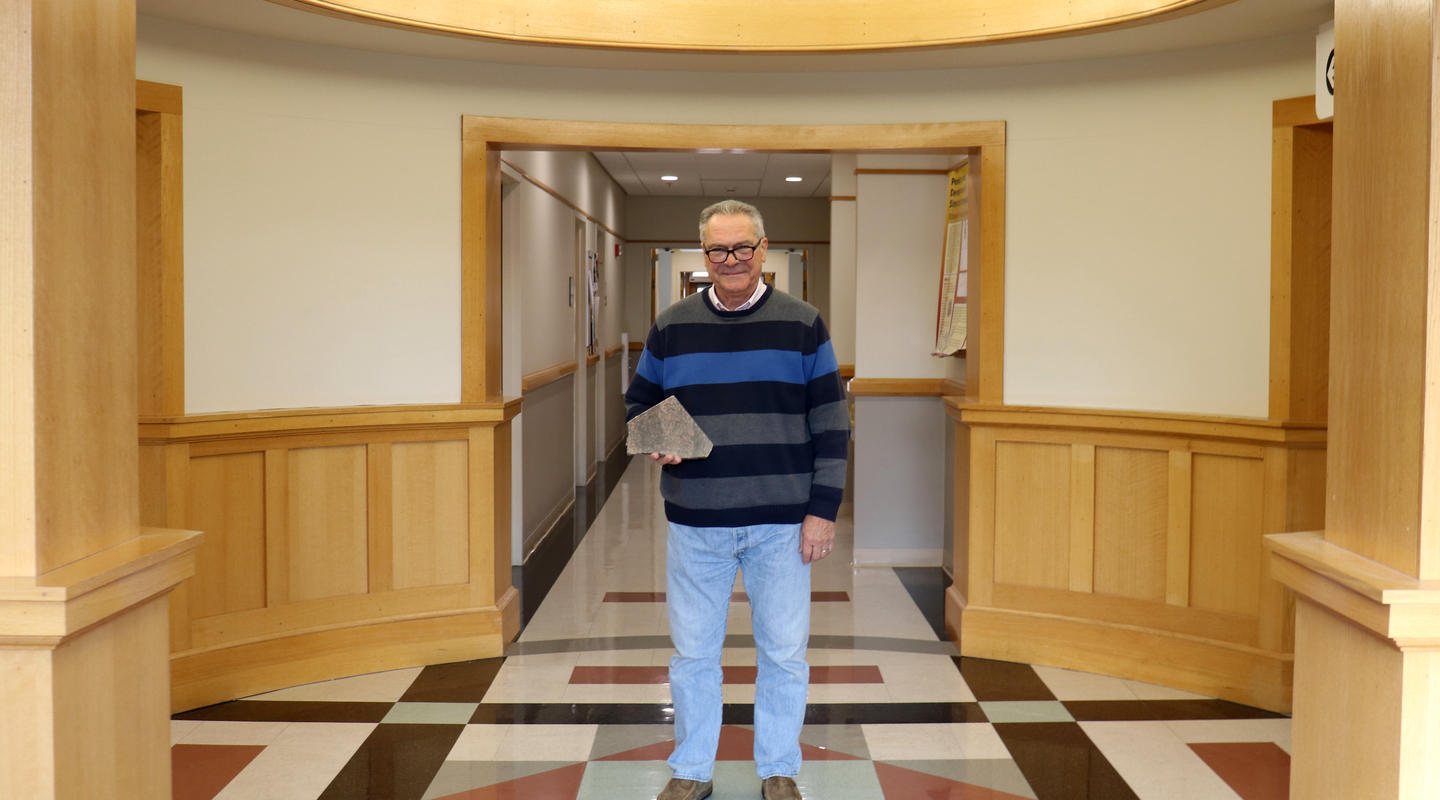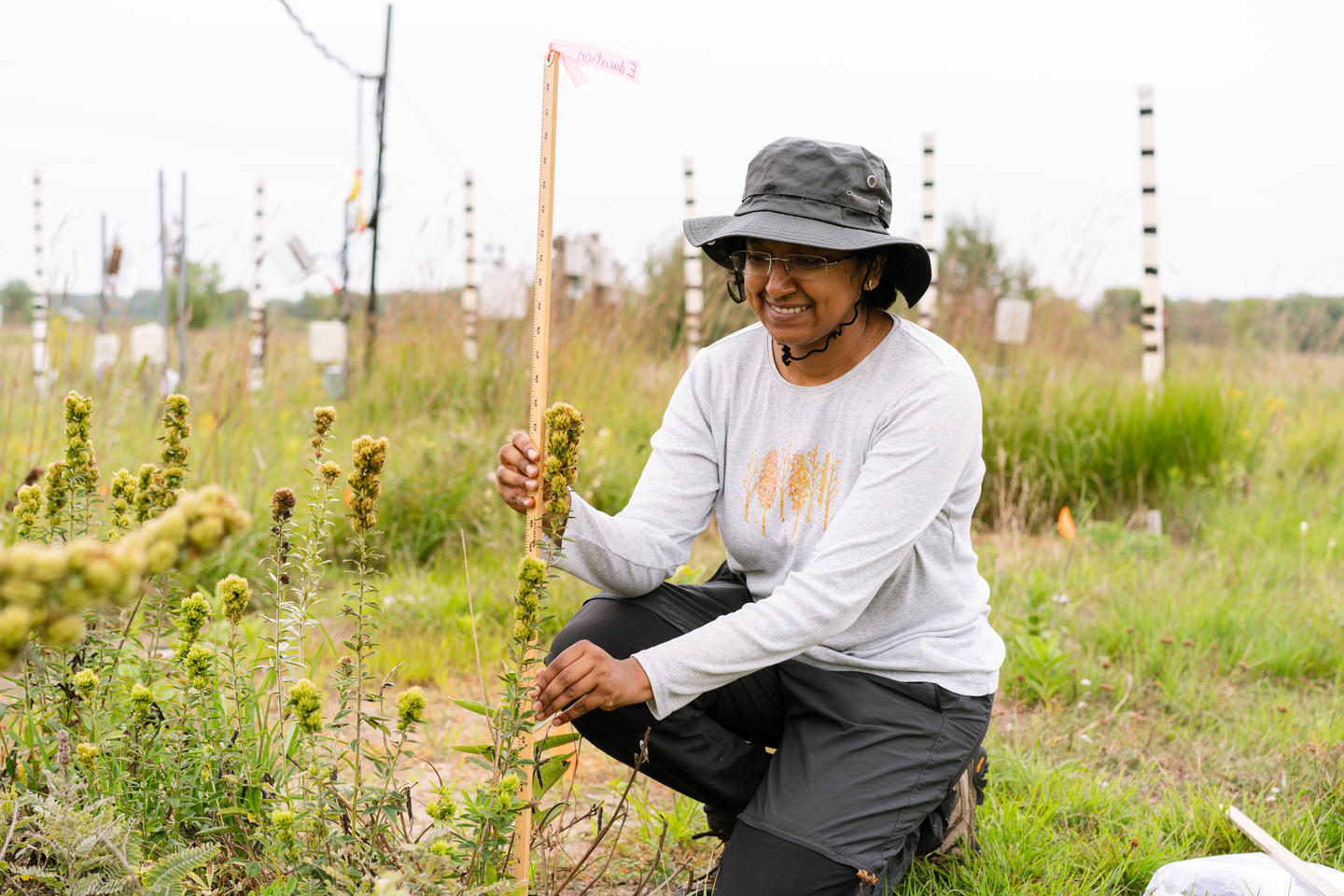
Neha Mohanbabu at Cedar Creek. All photos by Dara Taylor.
If a seed falls in a prairie, and no one is around to see it, does anyone really know where it lands? This is a question Neha Mohanbabu is asking as part of her postdoctoral research at the Cedar Creek Ecosystem Science Reserve, which is supported in part by gifts from donors. How a seed falls—and how environmental changes affect its dispersal—is something she aims to model in a lab.
Mohanbabu collects seeds from a variety of prairie species in Cedar Creek’s BioCON (Biodiversity, CO2, and Nitrogen) experiment, which simulates global change stressors on native prairie ecosystems. In a controlled setting, she drops the seeds in a vacuum cylinder to estimate how quickly they fall. She then uses wind speed and drop height data from field measurements to model how far the seeds can travel. Her work could be especially useful to investigate how species in restored prairies maintain their populations amidst shifting ecosystem dynamics.
“Some species are perennial and regrow every season, but there are lots of instances where seed input can be really important,” Mohanbabu says.
Many factors at work
Seed dispersal in prairie ecosystems is often driven by wind. For this reason, seed mass, shape, and morphology play a huge role in how species within plant communities are distributed. Think of a milkweed or maple seed—the silken strands of a milkweed seed might allow the seed to float over a large area. The twirling pattern of a falling maple seed, however, might propel it the perfect distance from its mother tree.
Drought, nutrient changes, and shifts in the diversity and composition of an ecosystem’s plant community can drive changes in a plant’s height, reproductive success, and morphology. An excess of nutrients could drive higher success in one plant while hindering success in another. A flux in soil nutrients, such as nitrogen, could also change how likely a plant’s seeds or leaves will be consumed by hungry herbivores. This complex compounding of environmental changes all contribute to long-lasting changes in native prairie ecosystems.
Learning about the way seeds disperse in prairie ecosystems adds to scientists’ fundamental knowledge of how ecosystems function. But it may also provide insight into how prairies will shift in response to climate change.
“Our understanding of what happens to seeds, under global change scenarios, mostly comes from agricultural systems, or really short-term studies,” Mohanbabu says. “So this research would provide a basic understanding of how seeds of common prairie species might be responding to these global changes.”
Support the Cedar Creek Ecosystem Science Reserve.
